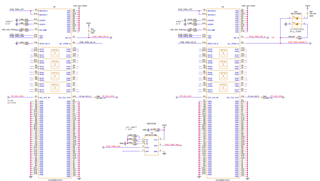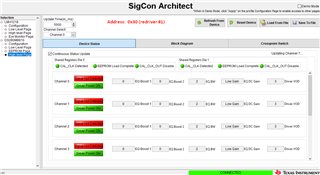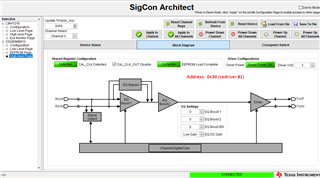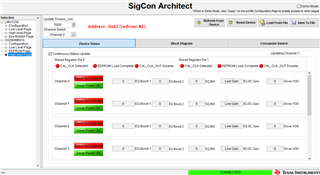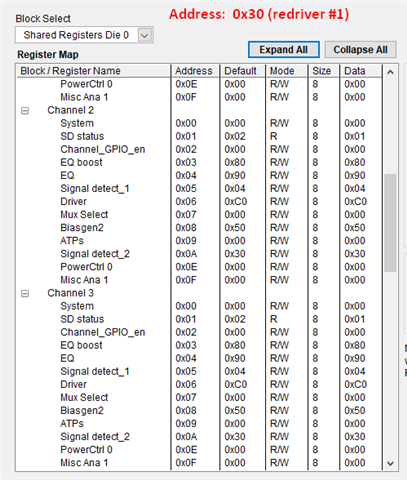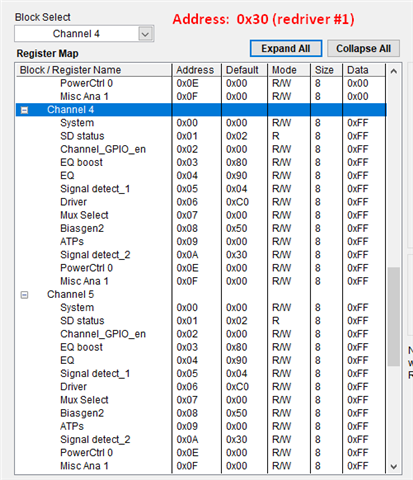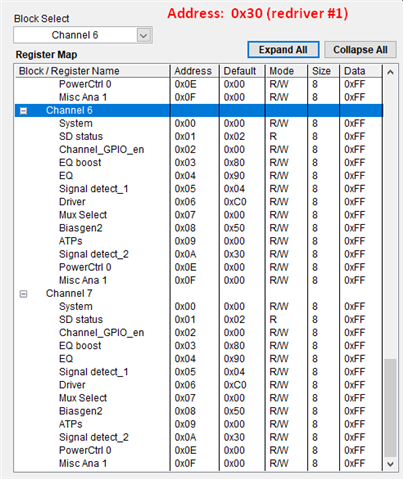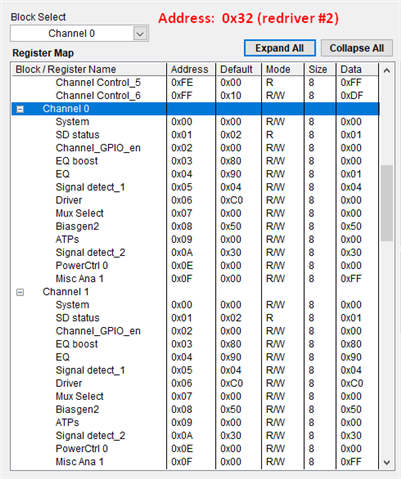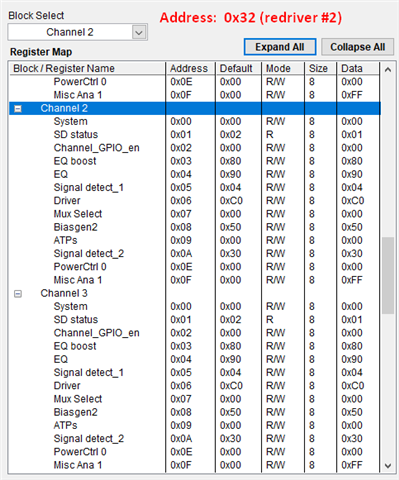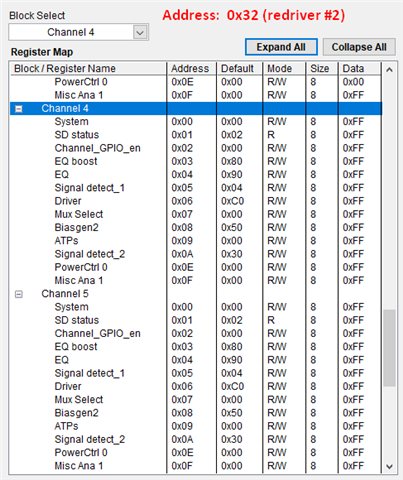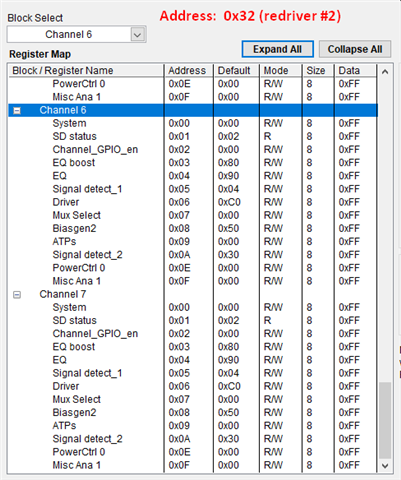Other Parts Discussed in Thread: SIGCONARCHITECT, DS560MB410
Hello TI technical folks,
I'm using the DS280MB810 in the following I2C bus architecture:
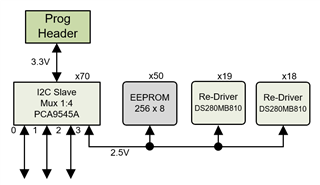
with the following schematics:
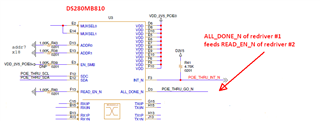
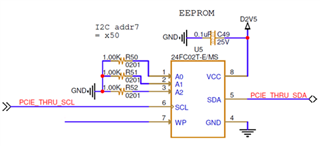
I've programmed the EEPROM with the .hex file appended beow and read back it's contents to verify that it was correctly programmed. Upon applying the D2V5 power, I am able to communicate with the redriver over I2C, but it doesn't appear that the redriver configured itself from EEPROM correctly (or even at all). Specifically, when I probe the ALL_DONE_N pin on redriver #2 it measures 2.5V, meaning that it hasn't finished configuring from EEPROM. Moreover, when I read the contents of the redriver registers over I2C from SigCon Architect, the desired EEPROM values are not present.
I replaced resistor R40 with a zero-ohm resistor, thinking that perhaps a hard-ground was needed at the READ_EN_N of redriver #1, rather than a 1K PD. But, that did not change the behavior and ALL_DONE_N still measures 2.5V at redriver #2. I've also scoured the .hex file contents against what application report SNLA244 says it should contain, and it looks correct. Basically, I set up all channels with these parameter values: VOD=2, EQ1=5, EQ2=0, Boost=3. And the .hex file seems to contain the correct data values for those parameters.
I'm stuck at the moment and looking for hints at what may be going on. Thanks.
Regards,
-Mark
----------------------------------------------------------
.hex file contents:
:20000000D10010E413E413E413E413D555D555D555D555C580100000000000000000000026
:200020000000000000000000000000000000000000000000000000000000000000000000C0
:20004000000000000000000000000000000000000000000000C5801000000000000000004B
:20006000000000000000000000000000000000000000000000000000000000000000000080
:20008000000000000000000000000000000000000000000000000000000000000000000060
:2000A000000000000000000000000000000000000000000000000000000000000000000040
:2000C000000000000000000000000000000000000000000000000000000000000000000020
:2000E0000000000000000000000000000000000000000000000000000000000000000003FD
:00000001FF


